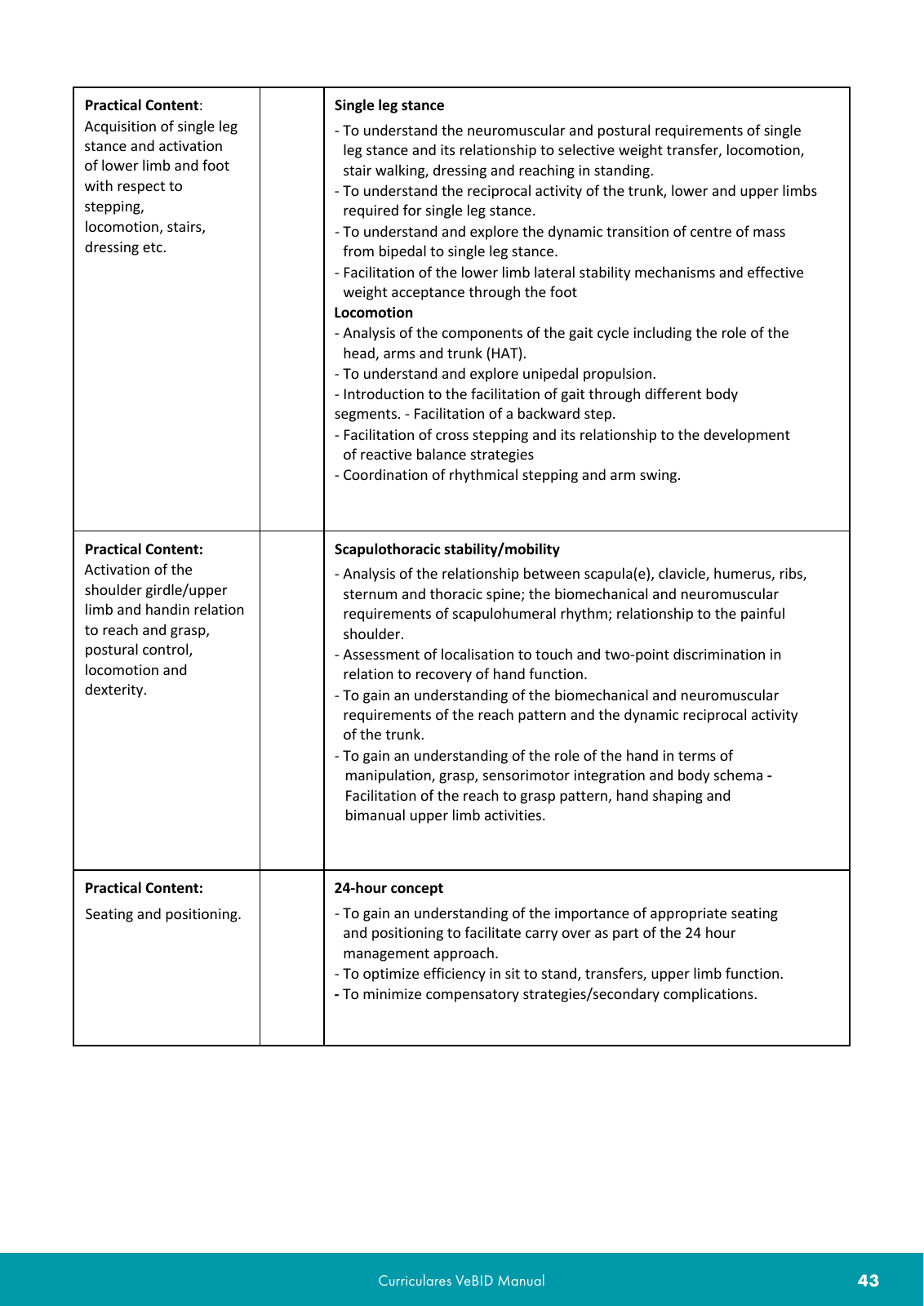Curriculares VeBID Manual 43 3 1 3 Basic Course Core Curriculum August 2021 11 Practical Content Acquisition of single leg stance and activation of lower limb and foot with respect to stepping locomotion stairs dressing etc Single leg stance To understand the neuromuscular and postural requirements of single leg stance and its relationship to selective weight transfer locomotion stair walking dressing and reaching in standing To understand the reciprocal activity of the trunk lower and upper limbs required for single leg stance To understand and explore the dynamic transition of centre of mass from bipedal to single leg stance Facilitation of the lower limb lateral stability mechanisms and effective weight acceptance through the foot Locomotion Analysis of the components of the gait cycle including the role of the head arms and trunk HAT To understand and explore unipedal propulsion Introduction to the facilitation of gait through different body segments Facilitation of a backward step Facilitation of cross stepping and its relationship to the development of reactive balance strategies Coordination of rhythmical stepping and arm swing Practical Content Activation of the shoulder girdle upper limb and handin relation to reach and grasp postural control locomotion and dexterity Scapulothoracic stability mobility Analysis of the relationship between scapula e clavicle humerus ribs sternum and thoracic spine the biomechanical and neuromuscular requirements of scapulohumeral rhythm relationship to the painful shoulder Assessment of localisation to touch and two point discrimination in relation to recovery of hand function To gain an understanding of the biomechanical and neuromuscular requirements of the reach pattern and the dynamic reciprocal activity of the trunk To gain an understanding of the role of the hand in terms of manipulation grasp sensorimotor integration and body schema Facilitation of the reach to grasp pattern hand shaping and bimanual upper limb activities Practical Content Seating and positioning 24 hour concept To gain an understanding of the importance of appropriate seating and positioning to facilitate carry over as part of the 24 hour management approach To optimize efficiency in sit to stand transfers upper limb function To minimize compensatory strategies secondary complications

Hinweis: Dies ist eine maschinenlesbare No-Flash Ansicht.
Klicken Sie hier um zur Online-Version zu gelangen.
Klicken Sie hier um zur Online-Version zu gelangen.